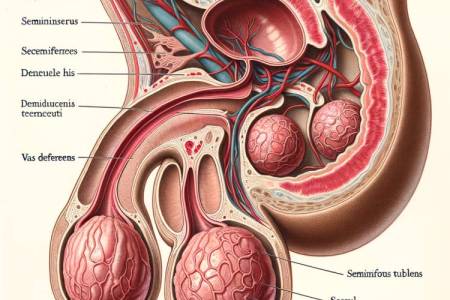Testicular Torsion or Inflammation? How to Recognize and Prevent Various Issues
This may not be the most uplifting topic, but knowledge and prevention of various injuries or diseases are crucial. In today's article, we will discuss issues related to the male reproductive organs, specifically focusing on the testicles. Nevertheless, I wish you all good health, so you never have to deal with such issues.
Cryptorchidism
Cryptorchidism, also known as undescended testicle, is a condition affecting 3-5% of boys. This condition is characterized by the failure of one or both testicles to descend into the scrotum during embryonic development. An undescended testicle may be associated with an increased risk of testicular cancer, making it important to diagnose and treat this condition early.
Treatment for an undescended testicle involves a surgical procedure called orchidopexy, where the testicle is brought down into the scrotum. This surgery is usually performed at an early age to minimize the risk of complications and preserve the patient’s fertility.
Testicular Torsion
Testicular torsion is a condition where the testicle suddenly rotates around its axis, potentially causing a disruption of blood vessels and blood supply to the testicle. This condition is considered a medical emergency requiring immediate medical attention.
Preventing testicular torsion involves avoiding excessive physical strain on the testicles and promptly diagnosing and treating any anatomical abnormalities that may increase the risk of this condition.
Hydrocele
A hydrocele is a condition where fluid accumulates around the testicle, causing swelling and discomfort. How can you identify testicular swelling? If the swelling is soft and translucent, it might be a hydrocele.
Treatment for a hydrocele involves removing the excess fluid through a surgical procedure called a hydrocelectomy. This means draining the excess fluid from the scrotum using a tube. The procedure is usually successful, and patients typically recover quickly.
Spermatocele
Spermatocele is a condition where sperm accumulates in the epididymis, leading to the formation of cysts. It results in benign cysts forming in the epididymis. These cysts usually do not cause any symptoms and are often discovered incidentally during a physical examination.
Treatment for a spermatocele involves monitoring the cyst, with surgical removal being an option if necessary. This procedure is generally successful, and patients typically recover quickly.
Testicular Cancer
Testicular tumours are rare but serious conditions that can involve benign or malignant growths. Treatment for testicular cancer includes surgery to remove the affected testicle and potentially chemotherapy or radiation therapy to ensure complete removal of the tumour.
Orchitis (Testicular Inflammation)
Orchitis is characterized by pain, swelling, and redness of the testicle. Treatment for orchitis involves administering antibiotics and rest. Surgery may be necessary in some cases to remove the inflammation and restore the testicle to its normal state.
The Importance of Early Diagnosis
Early diagnosis prevents complications and allows for quick and effective intervention. Urgent urological care is crucial for preserving testicular health and preventing serious consequences. It's important to regularly visit a doctor and undergo preventive check-ups to detect any potential problems early and initiate appropriate treatment.

 Tongue Tornado
Tongue Tornado 














Comments (0)
Facebook Comments (0)